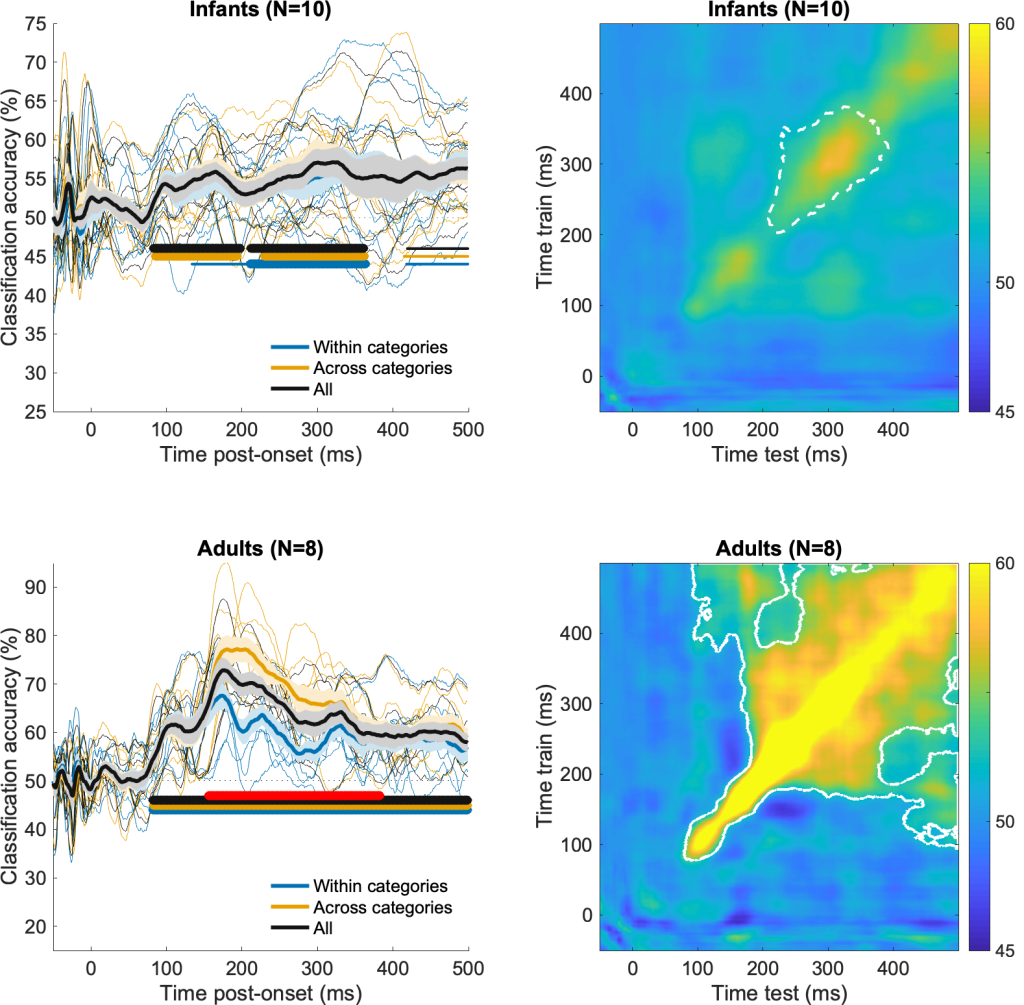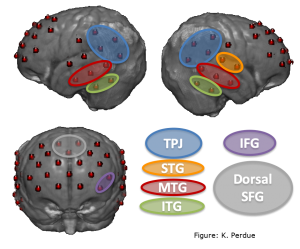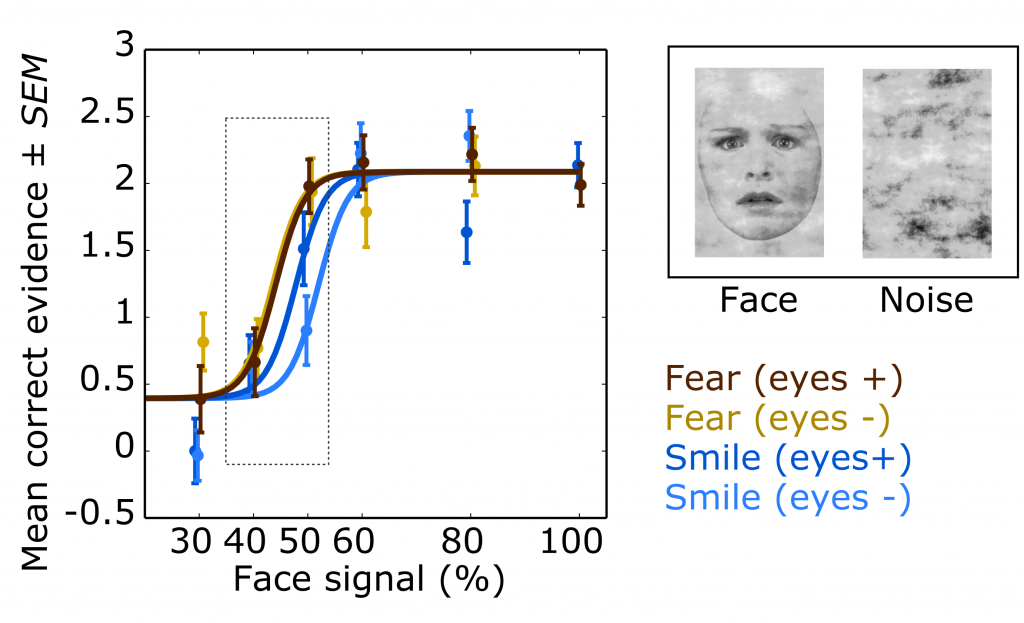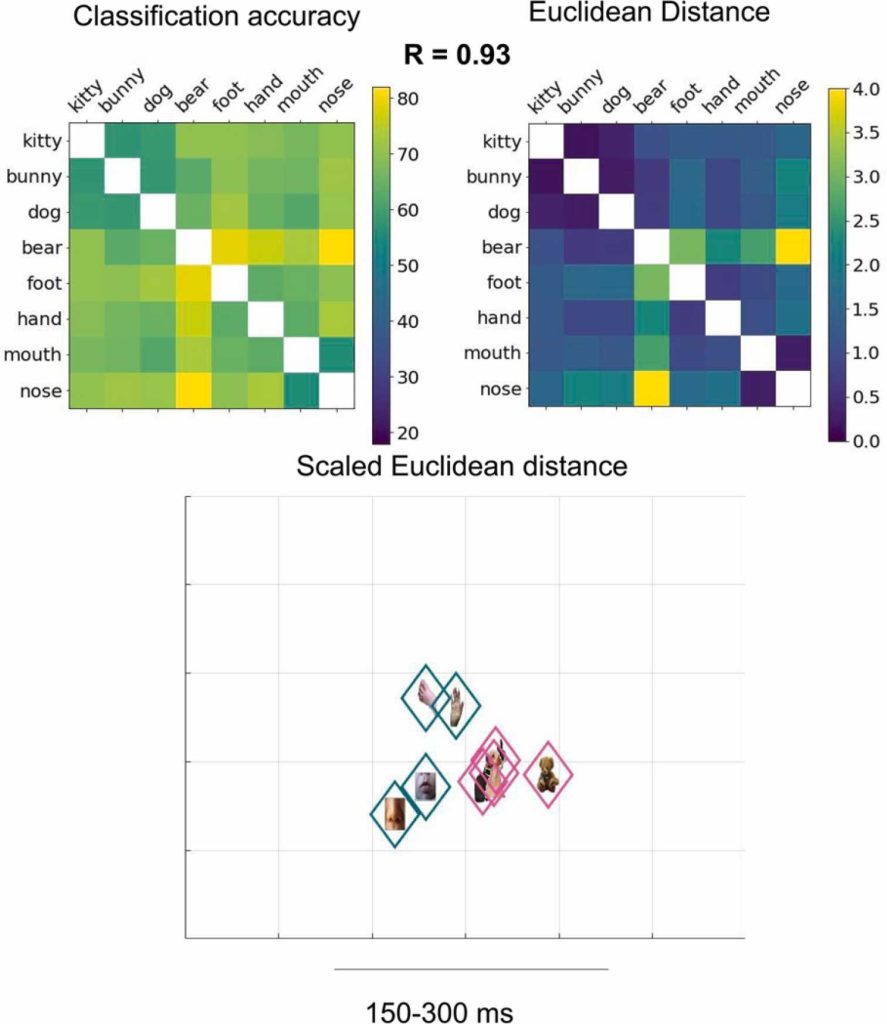How do infants represent and understand the visual world?
Learn more
Selected publications
- Ashton K., Zinszer B. D., Cichy R. M., Nelson C. A., Aslin R. N., Bayet L. (2022) Time-resolved multivariate pattern analysis of infant EEG data: A practical tutorial. Developmental Cognitive Neuroscience, 101094. doi: 10.1016/j.dcn.2022.101094
- Bayet L., Zinszer B., Reilly E., Cataldo J. K., Pruitt Z., Cichy R. M., Nelson C. A., & Aslin R. N. (2020) Temporal dynamics of visual representations in the infant brain. Developmental Cognitive Neuroscience 45, 100860. doi: 10.1016/j.dcn.2020.100860


What are the mechanisms for representing facial movements from visual input early in life?
Learn more
Selected publications
- Bayet L.*, Perdue K.*, Behrendt H. F., Richards J. E., Westerlund A., Cataldo J. K., & Nelson C. A. (2021) Neural responses to happy, fearful, and angry faces of varying identities in 5- and 7-month-old infants. Developmental Cognitive Neuroscience. 47, 100882. doi: 10.1016/j.dcn.2020.100882
- Bayet L., Behrendt H., Cataldo J. K., Westerlund A., & Nelson C. A. (2018) Recognition of facial emotions of varying intensities by three-year-olds. Developmental Psychology 54, 2240-2247
doi: 10.1037/dev0000588 - Bayet L., Pascalis O., Quinn P.C., Lee K., Gentaz E., & Tanaka J. (2015) Angry facial expressions bias gender categorization in children and adults: behavioral and computational evidence. Frontiers in Psychology 6, 346 doi: 10.3389/fpsyg.2015.00346
* Equal contributions
What are the content & implications of infants’ understanding of affective expressions?
Learn more
Selected publications
- Bayet L., & Nelson C. A. (2019) The perception of facial emotion in typical and atypical development. In: LoBue V., Perez-Edgar K., & Kristin Buss K. (Eds.), Handbook of Emotional Development. pp 105-138. doi: 10.1007/978-3-030-17332-6_6
- Behrendt H. F., Wade M., Bayet L., Nelson C. A., & Bosquet Enlow M. (2019) Pathways to social-emotional functioning in the preschool period: The role of child temperament and maternal anxiety in boys and girls. Development and Psychopathology 26, 1-14. doi: 10.1017/S0954579419000853
- Bayet L., Quinn P.C., Laboissière R., Caldara R., Lee K., & Pascalis O. (2017) Fearful but not happy expressions boost face detection in human infants. Proceedings of the Royal Society B: Biological Sciences 84, 20171054 doi: 10.1098/rspb.2017.1054


Integrating computational tools for developmental cognitive (neuro)science
Learn more
Selected publications
- Ashton K., Zinszer B. D., Cichy R. M., Nelson C. A., Aslin R. N., Bayet L. (2022) Time-resolved multivariate pattern analysis of infant EEG data: A practical tutorial. Developmental Cognitive Neuroscience, 101094. doi: 10.1016/j.dcn.2022.101094
- Bayet L., Zinszer B., Reilly E., Cataldo J. K., Pruitt Z., Cichy R. M., Nelson C. A., & Aslin R. N. (2020) Temporal dynamics of visual representations in the infant brain. Developmental Cognitive Neuroscience 45, 100860. doi: 10.1016/j.dcn.2020.100860
- Bayet L., Zinszer B. D., Pruitt Z., Aslin R. N. & Wu R. (2018) Dynamics of neural representations when searching for exemplars and categories of human and non-human faces. Scientific Reports 8, 13277 doi: 10.1038/s41598-018-31526-y
- Zinszer B. D., Bayet L., Emberson L. L., Raizada R. D. S., & Aslin R. N. (2017) Decoding semantic representations from fNIRS signals. Neurophotonics 5, 011003 doi: 10.1117/1.NPh.5.1.011003




